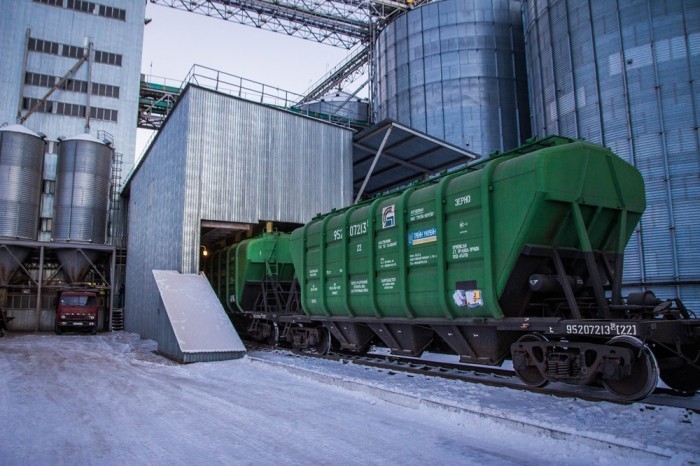The number of transshipment terminals in the west of Ukraine is growing in anticipation of further integration with the EU

Since the beginning of the full-scale invasion of the Russian Federation and the blocking of seaports of Ukraine, land logistics hubs have helped to create alternative export routes and ship significant volumes of agricultural products - Elevatorist.com reports.
From March 2022 to December 2023, 36 million tons of agricultural products were exported by rail. For this, entrepreneurs had to increase the number of transshipment terminals in the western regions of the country.
Over the past two years, about 30 companies have received permission to create railway infrastructure near the border for the construction of transshipment terminals. 7 points have already been put into operation, and 12 more are being completed. Almost all railway lines to the EU have 2-3, and in some places even 4 terminals, 70% of which were built after February 2022.
According to Ukrzaliznytsia, 16 terminals are currently operating in Ukraine, which allow 1,186 wagons of grain to be transshipped per day. There are 13 logistics hubs operating near the borders with Ukraine in Poland, 9 in Romania, 11 in Hungary, 7 in Slovakia, and a total of 56 terminals where grain cargoes are handled.
Substantial investments are being made in the border infrastructure to bring it to maximum capacity. Near the border, both simple transshipment hubs costing $100-150 thousand without storage containers are being built, handling 15-25 thousand tons of products every month, as well as large terminals that will be able to ship more than 500 tons of grain per hour.
However, the capacity of the railway at the border has not yet been fully utilized, as the load on the crossings is uneven. In peak periods, grain transportation through Yagodin and Mostyska reaches its maximum capacity, but these volumes can be doubled if the work of control services and carriers is improved.
Some crossings are not equipped to work with grain loads, so they need to be modified. Thus, the Rava-Rusk - Verkhrat crossing is used exclusively for the transportation of clay and coal, and during the two years of the war, it did not receive a single ton of grain. Despite the attractiveness of logistics through Romania, only 1/10 of domestic agricultural exports are transported through the Dyakovo - Halmeu crossing.
However, not all companies are interested in investing in border infrastructure, as they cannot predict their effectiveness in the long term. In addition to the technical capabilities of the enterprise, it is necessary to take into account the amount of grain that will need to be handled when the sea ports are fully operational. It is also worth taking into account the capacity of the infrastructure on the other side of the border in order to avoid downtime of wagons.
Many companies have abandoned the construction of border terminals because they consider land logistics to be less profitable than sea logistics. An increase in the number of rolling stock will reduce the cost of transportation to the ports, so it will be profitable to transport goods to the EU from the western regions (where 35-40% or 25-30 million tons of domestic grain is grown), and from other regions of Ukraine to the ports of Odesa.
It is worth considering that the Russian Federation will continue to try to block the operation of sea ports, so it is necessary to develop land infrastructure so that its efficiency ensures competitive rates and advantage.
Currently, the cost of rail transportation to the EU has increased from €30-35/t to €70-75/t, but it will decrease against the background of stable operation of seaports and balanced shipments to the borders. Then the border terminals will become trading points, where demand from European buyers will be determined.
It is now easiest to transport grain by rail through Romania and Slovakia, the most difficult – through Poland. There are problems with the supply of rolling stock from the EU and the blocking of borders by Polish strikers.
As Ukraine integrates into EU markets, resistance from farmers in other countries will grow, and we should be prepared for this. Strikes and obstruction of exports will continue for some time.
We will remind that in 2023, 10 million tons of agricultural products were exported by rail, 3.2 million tons by cars, 47 million tons by sea ports. In January 2024, 685 thousand tons of agricultural products were exported by rail, 140 thousand tons by cars, 5 by sea ports, 5 million tons. Corn, wheat, rapeseed and vegetable meal were mostly transported through the western borders.


